How to Tell the Difference Between Mold & Root Hair in Microgreens
Written by Garrett Corwin
Summarize with AI
Introduction
One of the most common challenges when starting your microgreen journey is understanding the differences between root hairs and mold. In fact, many new farmers haven’t even heard of root hairs, so they assume everything is mold. This makes sense when you consider that (i) most people haven’t grown anything before and (ii) root hairs aren’t usually visible when growing food because the seed is buried. The question of root hairs versus mold is common in the microgreen world because we plant most varieties directly on the surface of the soil, thereby exposing the root hairs.
What are Root Hairs?
Root hairs are tiny, hair-like extensions of the root cells. Root hairs massively increase the plant root’s surface area to volume ratio, thereby improving water and nutrient absorption. Root hairs appear as fine, white fuzz around the roots. They grow in a uniform pattern, evenly spaced, and appear soft in texture. Root hairs are closer to white or translucent in color.
What is Mold?
Mold is a type of fungus that thrives in moist, warm conditions. Mold appears in various forms from white and fuzzy to dark and slimy. Common molds found in microgreen environments include white mold and powdery mildew. Mold can appear as a dense, fluffy growth on the surface of the soil, but it can grow on the microgreens themselves. Unlike root hairs, mold patches will be inconsistent, varying in thickness and color. Mold will grow chaotically in all directions.
Tips for Identifying Root Hairs vs. Mold
Practical Advice & Troubleshooting Tips
- Look at the Location: Root hairs always stem from the root system, hence the name. If something small and stringy is emanating from the middle of the soil or the plant canopy, it can’t be a root hair. Mold can grow in the same vicinity as root hairs, but it will also originate from the canopy or the middle of the soil.
- Check the Spread: Root hairs will be uniform and closely aligned with the roots. Mold grows unevenly; mold grows chaotically in all directions.
- Feel the Texture: Root hairs are soft and delicate. Mild is slimy, powdery, or stringy.
- Observe the Smell: Root hairs do not produce any distinct smell. Mold will produce a musty odor, if sufficiently present.
- Color: Root hairs are white or translucent. Mold appears white from afar, but it’ll have a hue of dark blue, grey, or black.
- Gut Check: If you’re looking at mold, it will invoke a feeling of uneasiness. Most people are afraid of spiders and, therefore, dislike spider webs. The heebie-jeebie feeling you get when you encounter a spider or spider web could surface when you look at a mold formation.
Preventative Measures to Avoid Mold
- Proper Air Flow: Maintain adequate ventilation and air circulation in the farm. Use floor and wall-mounted fans to keep the air moving. When your trays are out under the lights, the plants should be “dancing” ever so slightly in the breeze of the fans.
- Proper Humidity: Maintain a relative humidity (RH) of 45%-55%. Ventilating or exchanging outside air for inside air is the easiest and cheapest way to maintain RH. However, if you live closer to the equator, ventilation won’t be as effective because the outside air is already higher in humidity. Otherwise, use stand alone dehumidifiers to pull excess moisture from the air.
- Avoid Overwatering: Water your microgreens sparingly. Allow the soil to dry out between watering sessions. Do not oversaturate the soil when planting. Most molds will form during germination because that’s when the conditions for mold are the best - warm, dark, and wet with no airflow.
- Sterilize Equipment: Regularly clean and sterilize your 1020 trays, harvest totes, and tools to prevent mold spores from thriving.
Examples
Green arrows point to root hairs, while red arrows point to mold.
Fava Root Hairs
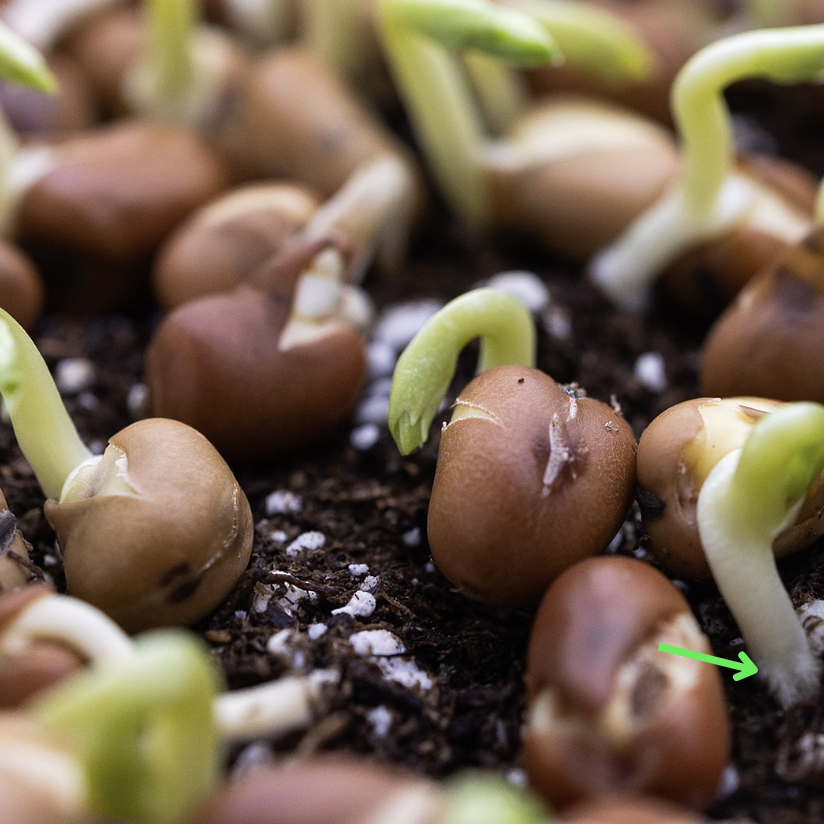
Tendril Pea Root Hairs
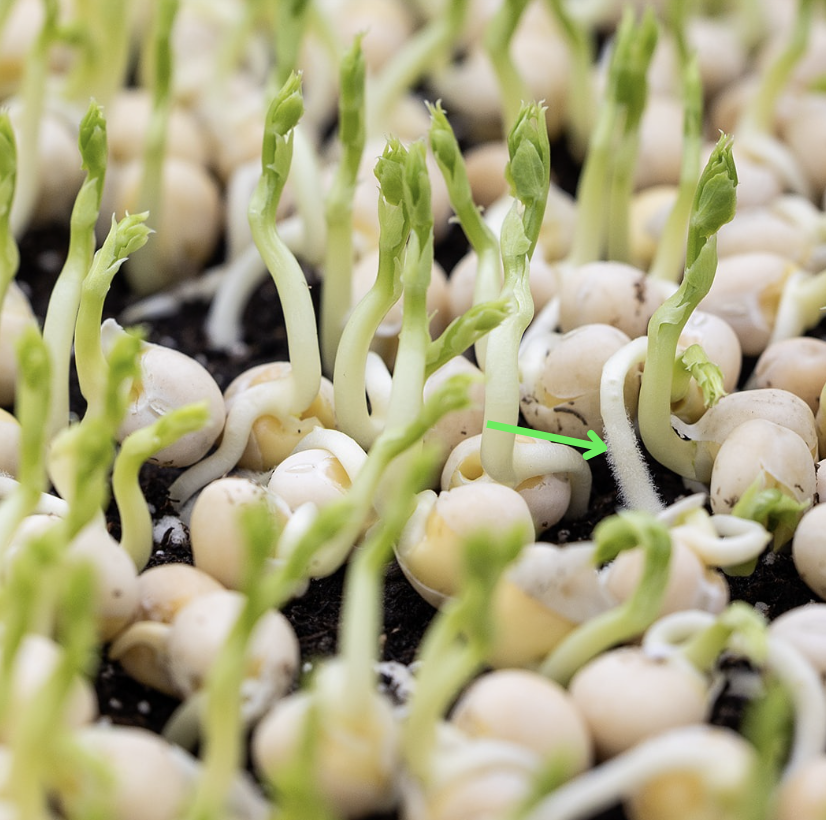
Kohlrabi Root Hairs
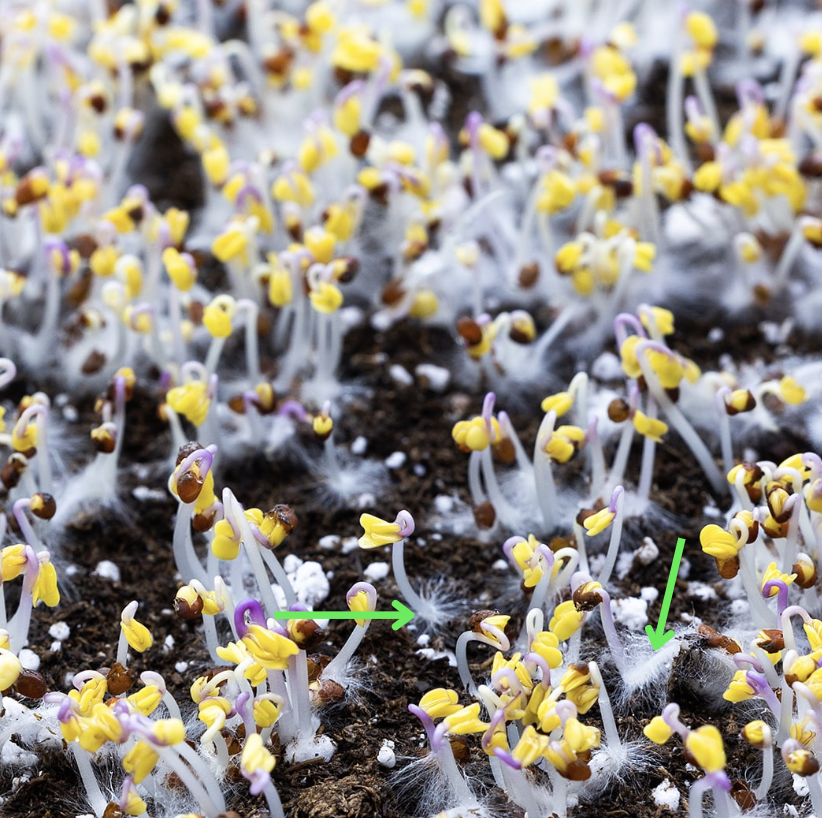
Parsley Mold
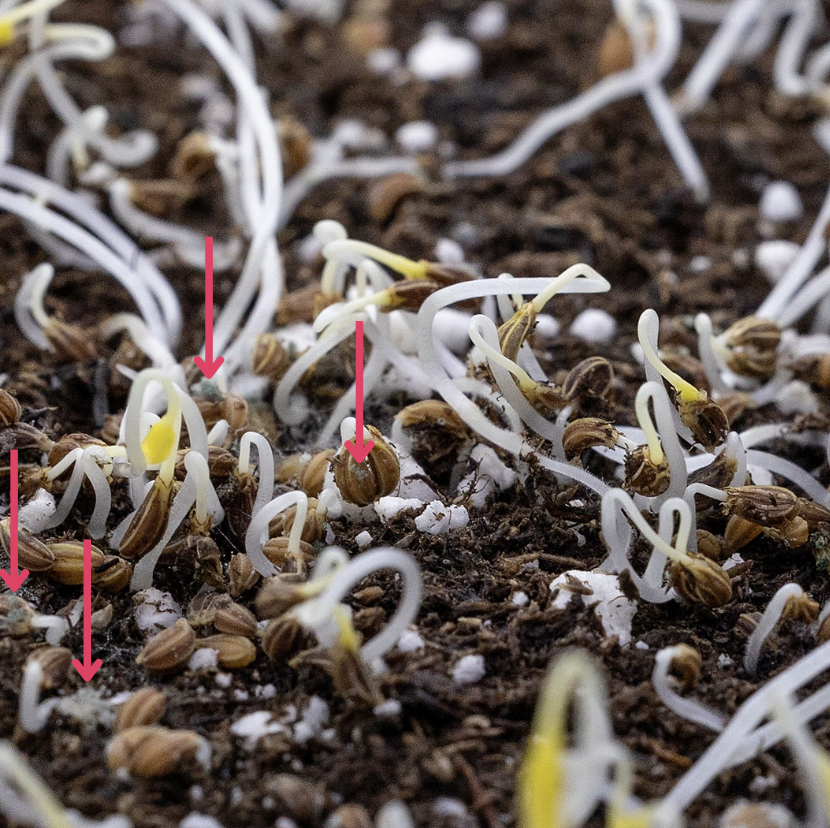
Sunflower Mold Fibers
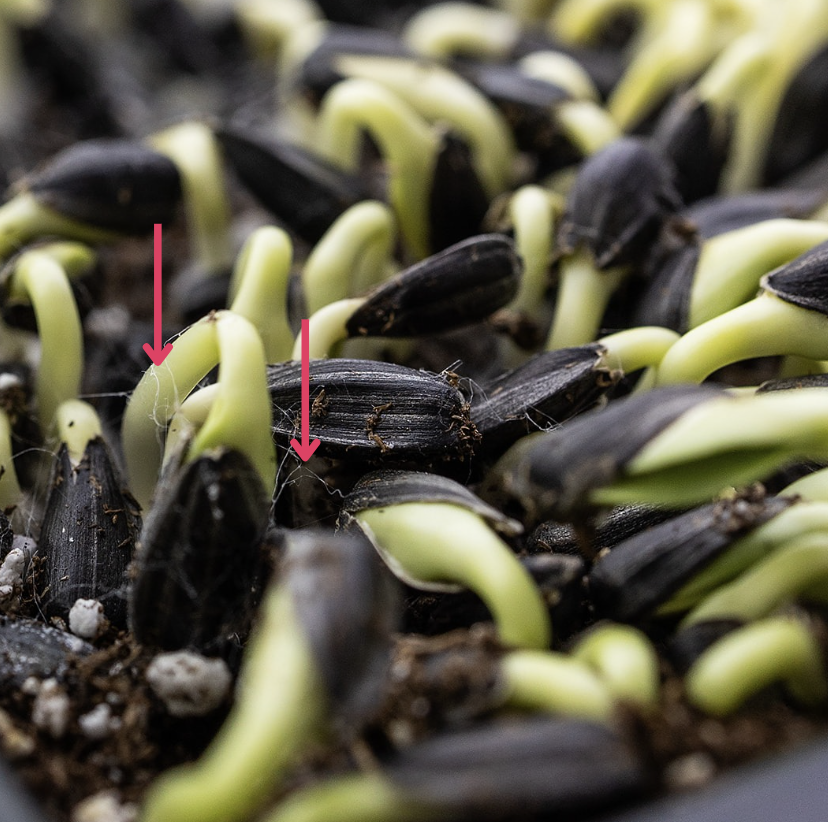
Sunflower Mold Fibers
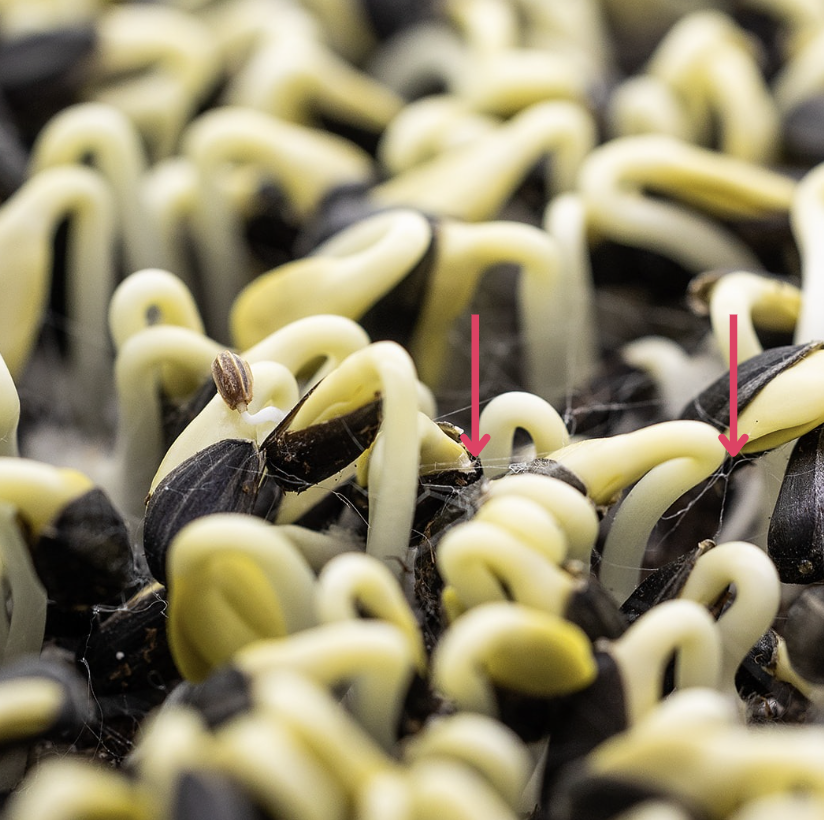
Sunflower Mold Fibers
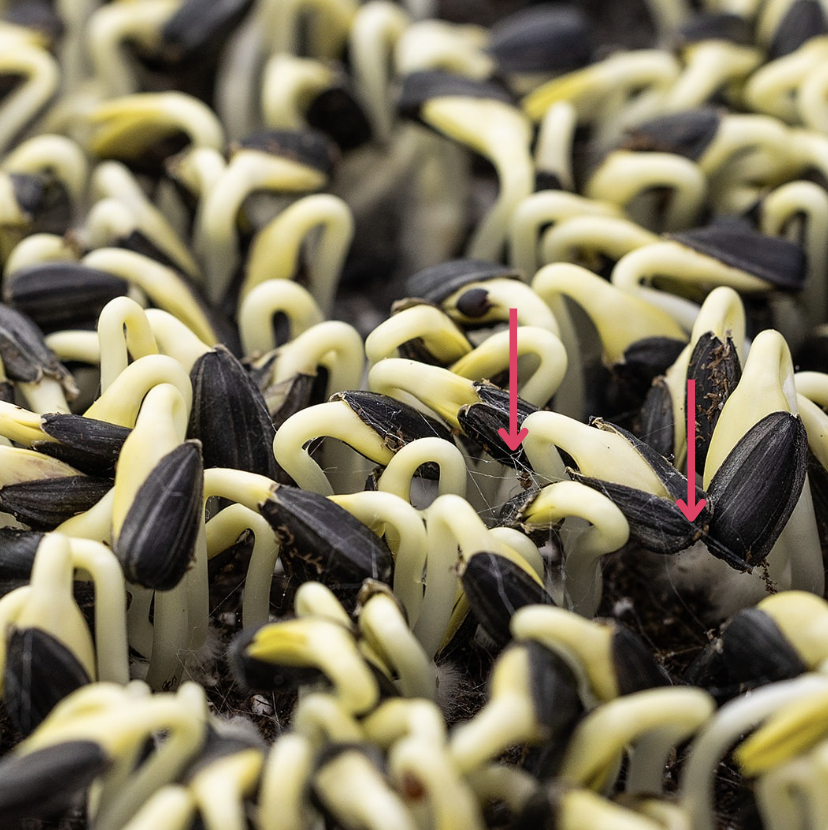
Broccoli Root Hairs
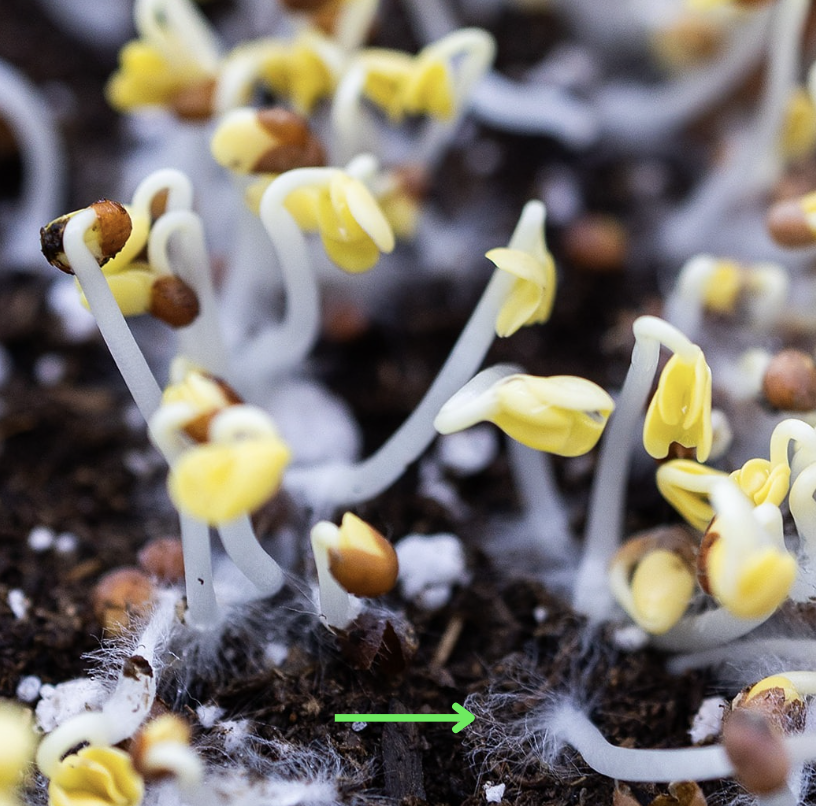
Cabbage Root Hairs
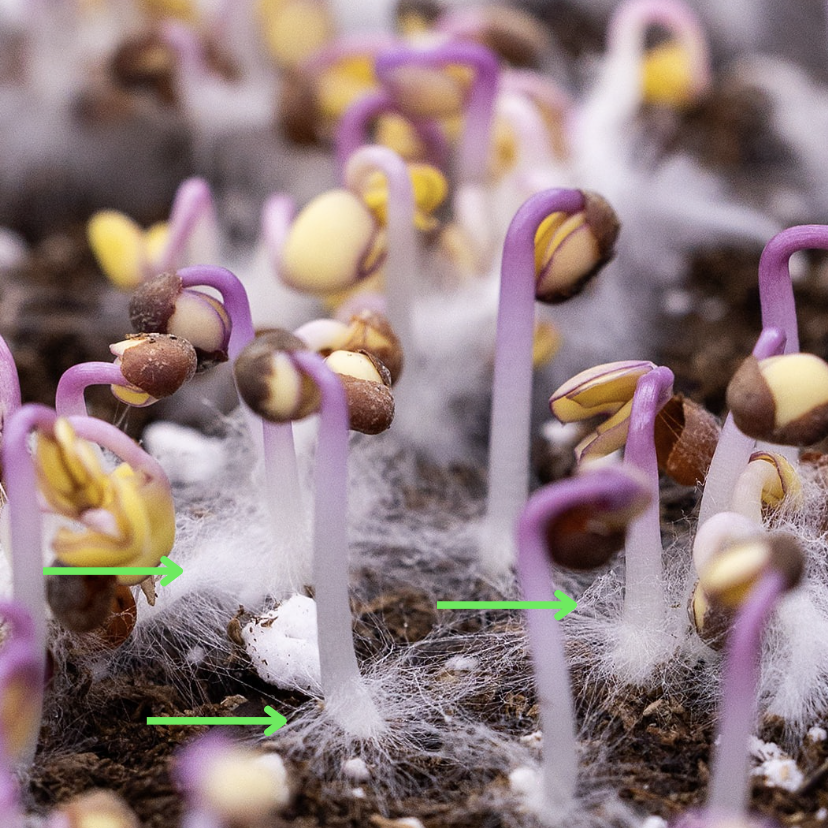
Cantaloupe Root Hairs
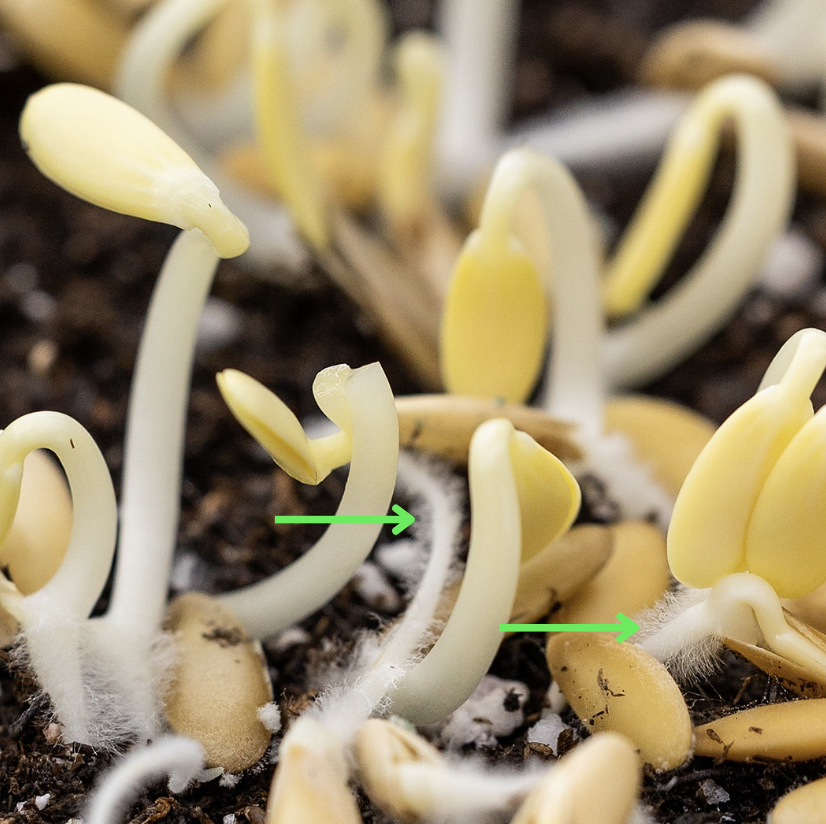
Radish Root Hairs
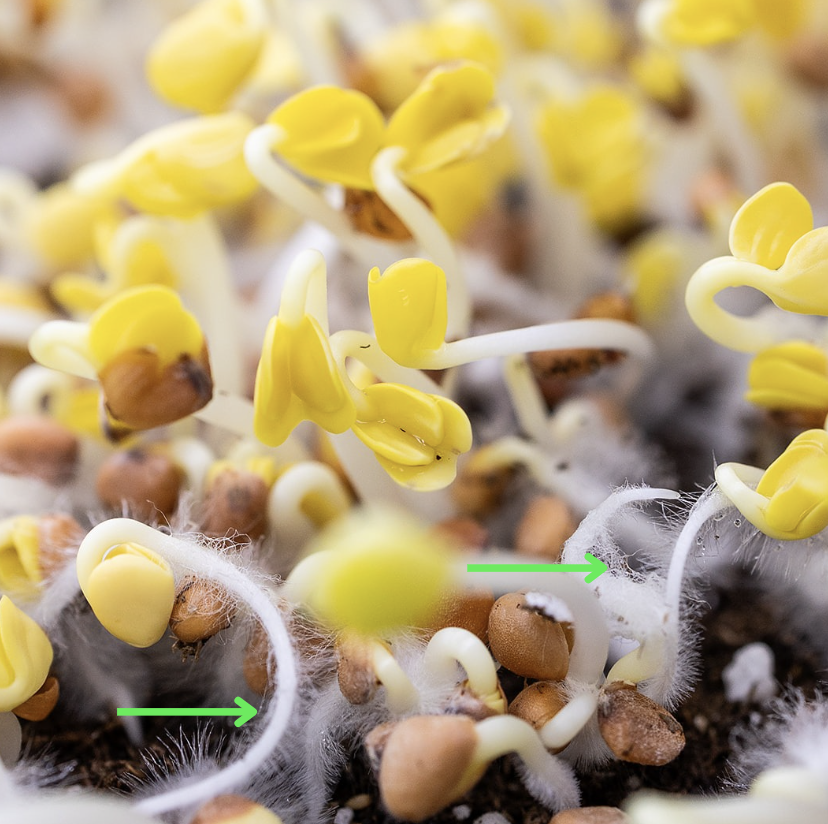
Kale Root Hairs
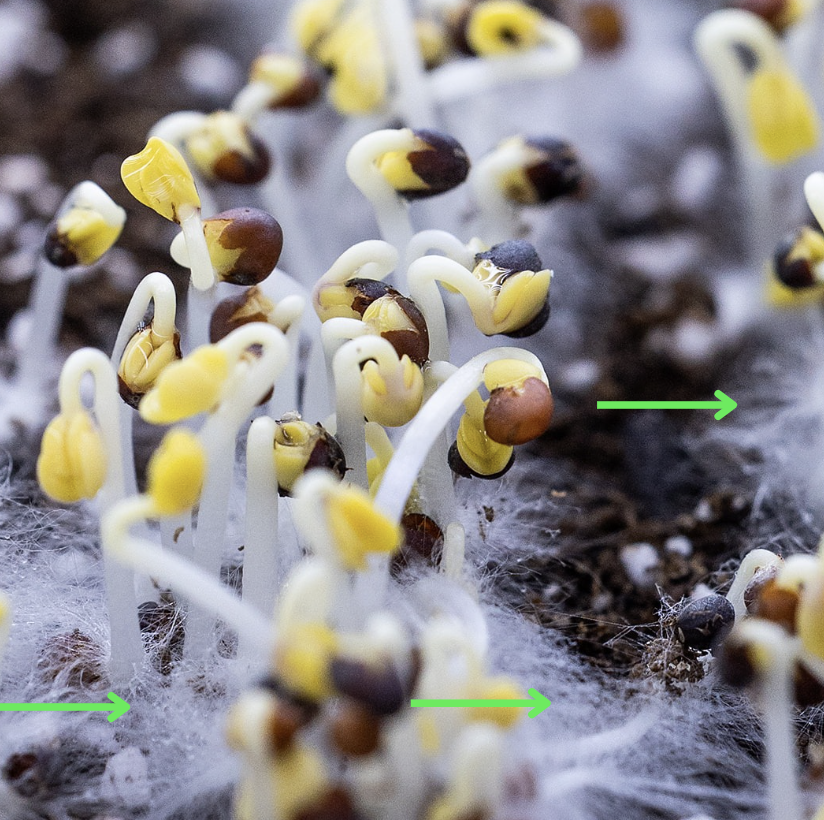
Lettuce Root Hairs
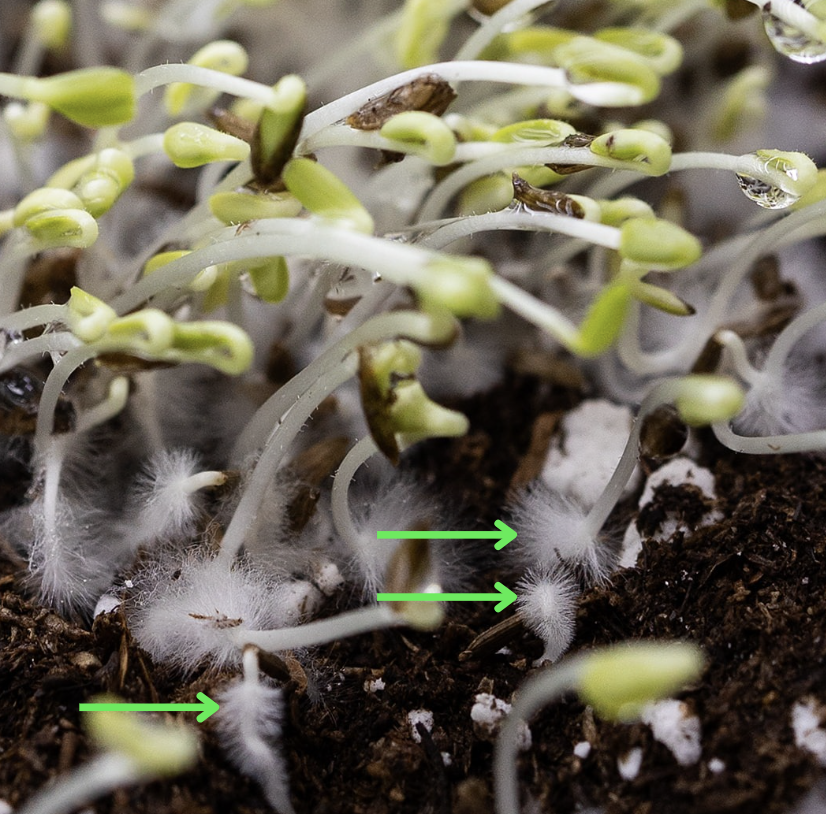
Related Articles
Damping Off: How to Prevent & Manage A Common Seedling Disease
How to Water Your Microgreens: Top or Bottom?
Share this post: